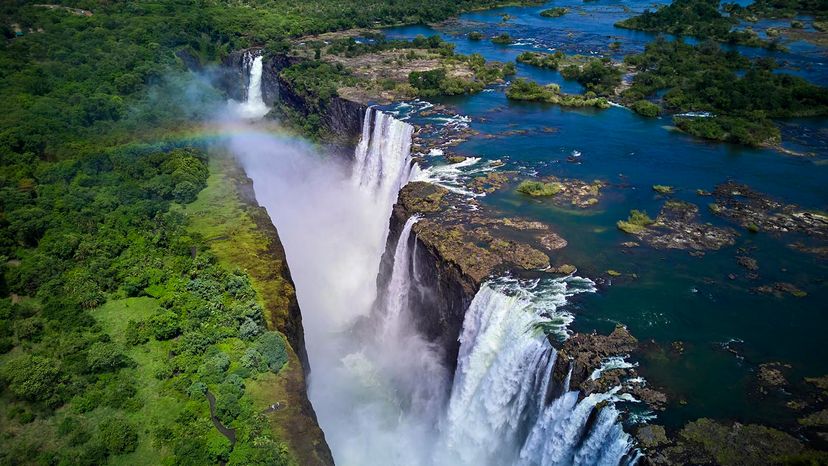Currently, only two countries start with the letter "Z," and they are both located in the sprawling continent of Africa. Zambia and Zimbabwe might be neighbors, but they each have their own unique flair and intriguing stories. Let's dive into what makes these two Zs so special.
Zambia
Zambia is named after the mighty Zambezi River, a defining feature of the country’s geography. Located in southern Africa, Zambia is a landlocked country bordered by eight other nations.
When Zambia gained independence from British colonial rule in 1964, the name was chosen to symbolize a fresh start and a nod to its natural heritage. The Zambezi, which means "Great River," reflects the country's rich landscape and abundant water resources.
One of the Zambezi River's most spectacular features is Victoria Falls, located on the border between Zambia and Zimbabwe. As one of the largest and most famous waterfalls in the world, it's locally known as "The Smoke That Thunders." It’s a sight that’ll leave you speechless (and probably a bit damp).
And with water comes animals: Zambia is also renowned for its incredible wildlife. This paradise for safari enthusiasts offers a chance to see the Big Five — the lion, leopard, elephant, rhinoceros and Cape buffalo, originally named by hunters for their difficulty to hunt on foot — and more.
For all of you foodies out there, don’t miss trying nshima, a staple maize dish that's as Zambian as it gets. It's usually served with relish, which can include vegetables, meat or fish.
Zambia is also one of the most urbanized countries in Africa, with a significant portion of its population living in cities like the capital, Lusaka. Visitors can explore vibrant markets, check out the Lusaka National Museum and enjoy the city's bustling nightlife.
Along with its bustling city centers, Zambia boasts numerous national parks and protected areas, reflecting a blend of urban and natural environments.
Zimbabwe
Zimbabwe got its name from the ancient city of Great Zimbabwe, a historical site known for its impressive stone ruins. When the country gained independence from British rule in 1980, the name was chosen to reflect its rich cultural heritage and break away from its colonial past as Rhodesia.
The name "Zimbabwe" is derived from "dzimba-dza-mabwe," which means "houses of stone" in the Shona language — fitting for a country with such monumental architecture.
Zimbabwe shares more than just a starting letter and a continent with Zambia. Both countries are home to the majestic Victoria Falls, one of the Seven Natural Wonders of the World, straddling their border. Both nations also offer vibrant wildlife experiences with numerous national parks perfect for safaris.
For culinary explorers, Zimbabwe’s signature maize dish, sadza, is quite similar to Zambia’s nshima. Sadza is a staple food in Zimbabwe, similar to polenta or grits, made from finely ground maize (corn) meal. It is a versatile dish that forms the cornerstone of many Zimbabwean meals.
To prepare sadza, the cook gradually adds maize meal to boiling water and stirs until the mixture reaches a thick, smooth consistency. The sadza usually cooks until it pulls away from the sides of the pot and the preparer can easily mold it with their hands.
In addition to its rich history and culinary delights, Zimbabwe offers a variety of activities for visitors. Explore the stunning Hwange National Park, renowned for its large elephant population and diverse wildlife. Or, visit the ancient ruins of Great Zimbabwe, a UNESCO World Heritage site that offers a glimpse into the country’s storied past.
Adventure seekers can enjoy white-water rafting and bungee jumping at Victoria Falls, while those looking for a more relaxed experience can take a sunset cruise on the Zambezi River.
